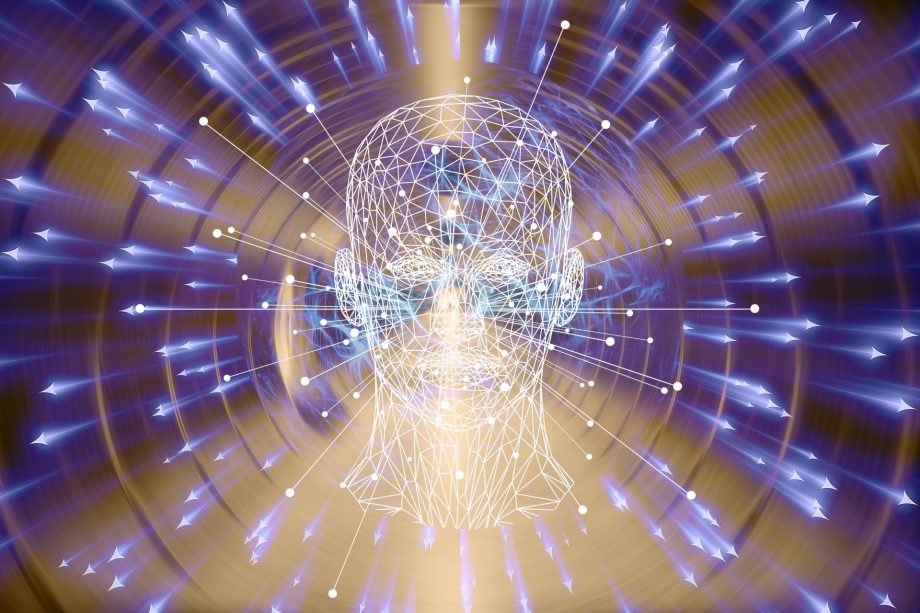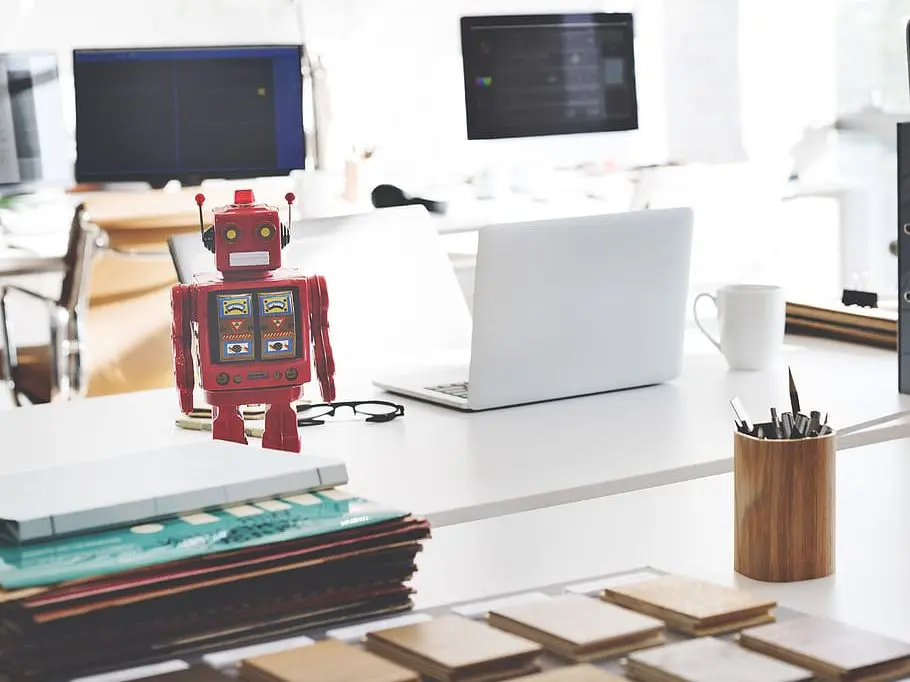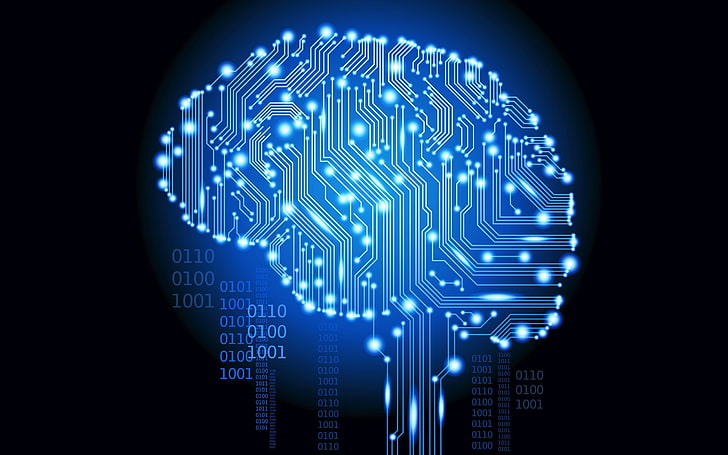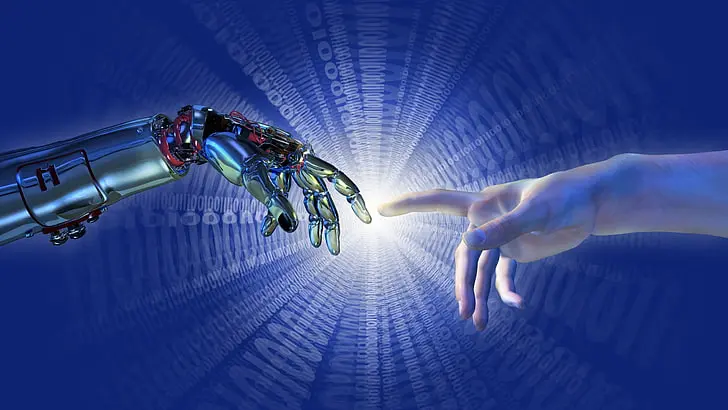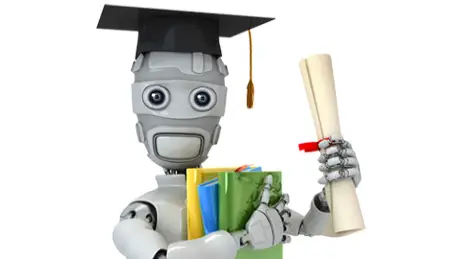
You’re probably wondering, What type of AI is ChatGPT? Well, let’s dive right in! ChatGPT is a technology that’s been making quite a splash in the world of AI.
If you ever found yourself wondering what type of AI is ChatGPT? then you’re not alone!
As we navigate this digital age, it’s natural to be curious about the technologies shaping our world.
ChatGPT, a fascinating piece of AI, is one such marvel that has been making waves.
So, let’s embark on this journey together, as we unravel the mysteries of ChatGPT and delve into the intriguing world of artificial intelligence.
What type of AI is ChatGPT? In this post:
If you want to answer the question of what type of AI is ChatGPT then you’re in the right place!
In this blog post, we’re going to take a friendly, conversational stroll through the world of AI, focusing on the intriguing ChatGPT.
We’ll explore its definition, the technology behind it, who created it, and how it works.
We’ll also dive into its uses, limitations, and even some ethical concerns.
And if you’re wondering about alternatives to ChatGPT or have some burning questions, we’ve got you covered there too.
So, let’s get started on this exciting journey!
Brief Overview of AI and Chatbots
Artificial Intelligence, or AI as it’s commonly known, has been a hot topic for a while now.
It’s like the new kid on the block that everyone’s curious about. In simple terms, AI is a branch of computer science that aims to create machines that mimic human intelligence.
Think of it as teaching machines to learn, reason, perceive, infer, communicate, and make decisions like us humans. Pretty cool, right?
Now, one of the most popular applications of AI is chatbots. Imagine having a conversation with a machine that responds just like a human would.
That’s what a chatbot does. They’re designed to simulate human-like conversations and are commonly used in customer service to answer queries, provide recommendations, and even make reservations.
Introduction to ChatGPT
Now, let’s talk about ChatGPT. If AI were a family, ChatGPT would be the prodigy everyone’s proud of.
ChatGPT is a state-of-the-art AI chatbot developed by OpenAI. It’s not just any chatbot, though.
It’s designed to generate human-like text based on the input it receives.
This means it can carry on a conversation, write an essay, or even draft an email that sounds like it was written by a human.
It’s like having a virtual assistant that can communicate just like us.
In the following sections, we’ll dive deeper into what makes ChatGPT tick, its uses, and some of the concerns surrounding it.
So, stick around, because it’s going to be an enlightening ride!
What is ChatGPT?
ChatGPT is a fascinating piece of technology that’s been making quite a splash in the world of AI.
It’s like the virtual friend who always has something interesting to say. But there’s a lot more to it than just chit-chat.
In this section, we’re going to explore what ChatGPT is, the technology behind it, and how it’s changing the way we interact with machines.
So, buckle up and get ready for an exciting journey into the world of ChatGPT!
Definition of ChatGPT
Let’s start with the basics. ChatGPT, where GPT stands for Generative Pre-trained Transformer, is an advanced AI chatbot.
It’s like your virtual buddy who can chat, write, and even think (in a manner of speaking) like a human.
But it’s not just about simulating human-like text. ChatGPT can generate creative content, answer complex questions, and even learn from its interactions.
It’s like having a conversation with a well-read friend who can talk about a wide range of topics.
The technology behind ChatGPT
Now, let’s peek under the hood and see what makes ChatGPT tick.
Generative Pre-trained Transformer
The secret sauce behind ChatGPT is the Generative Pre-trained Transformer, or GPT for short.
This is a type of AI model that’s designed to understand context and generate text that’s relevant to the conversation.
It’s pre-trained on a vast amount of data from the internet, which means it has a broad knowledge base to draw from.
The ‘generative’ part means it can create new content, rather than just picking from pre-defined responses.
Reinforcement learning and reward models
But how does ChatGPT learn and improve? That’s where reinforcement learning and reward models come in.
Reinforcement learning is a type of machine learning where an agent learns to make decisions by taking actions in an environment to achieve a goal.
In the case of ChatGPT, the goal is to generate responses that are as human-like as possible.
The reward models are like a virtual pat on the back for the AI. When ChatGPT generates a good response, it gets positive feedback, which reinforces the behavior.
On the other hand, if the response isn’t up to par, the feedback is negative, guiding the AI to adjust its approach.
This continuous learning process helps ChatGPT to improve over time, becoming more adept at generating human-like text.
Who created ChatGPT?
Alright, now that we’ve got a handle on what ChatGPT is and the technology behind it, you might be wondering, Who’s the brainiac behind this incredible AI?
Well, prepare to be impressed! In this section, we’re going to reveal the creators of ChatGPT and take a look at some of their other innovative creations.
So, let’s pull back the curtain and meet the masterminds behind ChatGPT!
Information about OpenAI
OpenAI, the creator of ChatGPT, is a name that’s synonymous with cutting-edge AI research.
Founded in December 2015, OpenAI is a research organization committed to ensuring that artificial general intelligence (AGI) benefits all of humanity.
They’re like the superheroes of the AI world, using their powers (or in this case, their AI expertise) for the greater good.
OpenAI was founded by a team of high-profile entrepreneurs and researchers, including Elon Musk and Sam Altman.
With a mission to ensure that AGI is used for the benefit of all, OpenAI is committed to long-term safety, technical leadership, and a cooperative approach.
They’re not just about creating advanced AI; they’re also about making sure it’s used responsibly.
Other creations by OpenAI
But ChatGPT isn’t the only feather in OpenAI’s cap. They’ve been behind several other impressive AI creations.
One of these is Dall-E, an AI that generates images from textual descriptions.
Imagine being able to create an image of a ‘two-story pink house shaped like a shoe’ just from that description. That’s Dall-E for you!
Another notable creation is Codex, an AI that can interpret and generate programming code.
It’s like having a virtual coding assistant that can help you write and debug your code.
These are just a few examples of the innovative work being done by OpenAI.
Their creations are pushing the boundaries of what’s possible with AI and transforming the way we interact with technology.
How does ChatGPT work?
By now, you’re probably thinking, ChatGPT sounds amazing, but how does it actually work? Great question!
In this section, we’re going to demystify the workings of ChatGPT.
We’ll delve into the Generative Pre-trained Transformer, explore the role of deep learning and neural networks, and even take a look at how ChatGPT is trained.
So, if you’re ready to dive into the fascinating mechanics of this AI, let’s get started!
The Generative Pre-trained Transformer
The Generative Pre-trained Transformer, or GPT, is the engine that powers ChatGPT.
It’s like the brain of the operation. GPT is a type of language prediction model that uses machine learning to generate human-like text.
It’s ‘pre-trained’ because it’s been fed a vast amount of text data from the internet, which it uses as a reference to generate responses.
The ‘generative’ part means it can produce new, original content based on the input it receives.
So, when you ask ChatGPT a question, it uses the GPT model to generate a response that’s relevant and human-like.
The use of deep learning and transformer neural networks
Deep learning and transformer neural networks are the secret ingredients that make ChatGPT so impressive.
Deep learning is a type of machine learning that mimics the workings of the human brain in processing data.
It’s what allows ChatGPT to understand and generate human-like text.
Transformer neural networks, on the other hand, are a type of model used in natural language processing.
They help ChatGPT understand the context of a conversation.
For example, in the sentence ‘I took my dog for a walk’, a transformer neural network helps ChatGPT understand that ‘I’ is the one doing the walking and ‘dog’ is the one being walked.
The training process of ChatGPT
The training process of ChatGPT is a fascinating blend of technology and human input.
It starts with a large amount of text data from the internet. This data is used to train the GPT model, helping it understand language and how to generate human-like text.
But the training doesn’t stop there. Human trainers also play a crucial role. They provide conversations and rank the responses generated by ChatGPT.
This feedback is used to create ‘reward models’, which guide the AI in generating better responses.
Users can also provide feedback by upvoting or downvoting responses, helping ChatGPT to continuously learn and improve.
It’s like a virtual cycle of learning, with ChatGPT getting better with each interaction.
Uses of ChatGPT
Now that we’ve explored the inner workings of ChatGPT, let’s switch gears and look at the fun part and how we can use it!
You might be surprised to learn that ChatGPT isn’t just for chatting. From drafting emails to composing music, this versatile AI has a wide range of applications.
So, whether you’re a tech enthusiast, a busy professional, or just someone who loves exploring new technologies, you’re bound to find this section interesting.
Let’s dive in and discover the many uses of ChatGPT!
A variety of questions users can ask
One of the great things about ChatGPT is that it’s like a well-read friend who’s always ready for a chat.
You can ask it a wide variety of questions, from simple ones like What’s the weather like? to more complex ones like What is the meaning of life?
And it’s not just about factual questions. You can also ask it to explain concepts, generate ideas, or even tell a joke. The sky’s the limit!
And if you’re wondering about its knowledge base, it’s pretty extensive.
ChatGPT has been trained on a vast amount of data from the internet, so it can answer questions on a wide range of topics.
However, it’s important to note that its knowledge is up to date only until 2021, so it might not have information on events or data after that year.
Different applications of ChatGPT
But ChatGPT isn’t just for answering questions. It has a wide range of applications that can make our lives easier and more interesting.
For instance, it can draft emails, write code, and even compose music.
Need to summarize an article or a podcast? ChatGPT has got you covered.
Want to create a catchy title for your blog post or generate ideas for a story? ChatGPT can do that too.
And it’s not just about work. ChatGPT can also be used for fun and learning.
You can use it to play games, ask trivia questions, or even learn about complex topics in a simple and engaging way.
It’s like having a personal assistant, a tutor, and a friend all rolled into one!
Limitations of ChatGPT
As much as we’d love to say that ChatGPT is perfect, it’s important to remember that no technology is without its limitations.
Just like how a superhero has its kryptonite, ChatGPT has its own set of challenges.
In this section, we’re going to take a balanced look at ChatGPT by exploring some of its limitations.
From its understanding of human language to its knowledge cutoff, we’ll delve into the areas where ChatGPT still has room for improvement.
So, let’s dive in and explore the other side of the coin!
Understanding of human language
While ChatGPT is impressive in its ability to generate human-like text, it’s important to remember that it doesn’t fully understand human language the way we do.
It’s like a skilled mimic, able to reproduce the patterns it’s been trained on, but without a deep understanding of the meaning behind the words.
This can sometimes lead to responses that seem shallow or lack true insight.
For instance, it might not fully grasp the nuances of humor, sarcasm, or cultural references.
It’s also worth noting that it can sometimes focus on the wrong part of a question and not be able to shift its focus when the conversation changes.
Knowledge cutoff
Another limitation of ChatGPT is its knowledge cutoff. Since it’s been trained on data up to the year 2021, it doesn’t have information on events or data after that year.
So, if you ask it about the latest movie releases or current events, it might not be able to provide accurate information.
It’s like having a friend who’s a bit behind on the news.
Other limitations
There are also a few other limitations worth noting. For one, while ChatGPT can generate text that’s remarkably human-like, it can sometimes sound a bit mechanical or repetitive.
It might overuse certain words or phrases, which can make the text feel less natural.
Another limitation is that while it can summarize information, it doesn’t cite sources or provide analysis or insight into the data.
It might provide statistics but without commentary on what these statistics mean or how they relate to the topic.
Finally, it’s worth noting that ChatGPT is not perfect and can sometimes provide incorrect or misleading information.
This is why it’s always important to verify the information from multiple sources, especially for important decisions or research.
Ethical concerns associated with ChatGPT
With great power comes great responsibility, and the same applies to the use of AI like ChatGPT.
While it’s an incredibly powerful tool, it’s not without its ethical considerations.
In this section, we’re going to delve into some of the ethical concerns associated with ChatGPT.
From potential misuse to issues of bias and privacy, we’ll explore the darker side of this technology.
It’s a crucial conversation to have, as it helps us navigate the use of such technology responsibly.
So, let’s dive in and tackle these important issues head-on!
Plagiarism and deceitful use
One of the ethical concerns associated with ChatGPT is the potential for plagiarism and deceitful use.
Given its ability to generate human-like text, it could be used to cheat on assignments, impersonate others, or spread misinformation.
For instance, students could use it to write essays or complete assignments, which raises concerns about academic integrity.
Similarly, it could be used to generate fake news or misleading information, which can have serious societal implications.
Bias in training data
Another ethical concern is the potential for bias in the training data.
Since ChatGPT is trained on data from the internet, it can inadvertently learn and perpetuate the biases present in that data.
This could lead to biased responses, which can be harmful and discriminatory.
For instance, if the training data includes sexist or racist language, ChatGPT could potentially generate responses that reflect these biases.
Replacing jobs and human interaction
The rise of AI also raises concerns about job displacement.
As ChatGPT and similar technologies become more advanced, they could potentially automate tasks currently performed by humans.
This could lead to job loss in certain sectors, which is a significant concern.
Additionally, as we rely more on AI for interaction, it could potentially reduce human-to-human interaction, which can have implications for our social skills and relationships.
Privacy issues
Finally, there are also concerns about privacy.
Since ChatGPT generates responses based on the input it receives, it could potentially reveal sensitive information.
For instance, if a user shares personal information during a conversation with ChatGPT, that information could potentially be accessed by others.
Additionally, there are concerns about how the data collected by ChatGPT is stored and used, and whether it could be used to track or profile individuals.
Alternatives to ChatGPT
While ChatGPT is certainly impressive, it’s not the only player in the game.
There are several other AI technologies out there that offer similar capabilities.
So, if you’re curious about what else is out there, or if you’re looking for an alternative to ChatGPT, this section is for you!
We’ll explore other text generator alternatives as well as coding alternatives.
So, let’s broaden our horizons and take a look at the wide world of AI beyond ChatGPT!
Other text generator alternatives – Google Bard
Google’s Bard is another notable alternative to ChatGPT. Bard is a language model developed by Google that’s designed to generate human-like text.
What sets Bard apart is its ability to pull information directly from the internet in real-time to provide the most up-to-date information.
Just like ChatGPT, Bard can be used for a variety of tasks, from answering questions to generating content.
However, one of its key advantages is its ability to provide information on current events or recent data, thanks to its real-time internet access.
This makes it a great tool for tasks that require the latest information.
So, if you’re looking for an AI that can provide real-time information, Google’s Bard could be a great alternative to ChatGPT.
Coding alternatives
If you’re looking for AI that can help with coding, there are several alternatives to ChatGPT.
For instance, there’s CodeStarter, an AI that can help you start a coding project by generating a basic structure for your code.
Amazon CodeWhisperer is another option. It’s an AI-powered tool that can help you write, review, and debug code.
OpenAI Codex is another powerful tool for coding. It’s an AI that can interpret and generate programming code, making it a handy assistant for developers.
GitHub Copilot and Tabnine are also worth checking out. They’re AI-powered tools that can suggest code as you type, helping you code faster and with fewer errors.
These are just a few examples of the alternatives to ChatGPT. While ChatGPT is certainly impressive, it’s always good to know what other options are out there!
What type of AI is ChatGPT? FAQs
By now, we’ve covered a lot of ground on ChatGPT, but you might still have a few burning questions.
Don’t worry, you’re not alone! In this section, we’re going to tackle some of the most frequently asked questions about ChatGPT.
From its cost to its accuracy and alternatives, we’ve got you covered. So, if you’re ready to quench your curiosity, let’s dive into these FAQs!
Q: Is ChatGPT free?
A: Yes, ChatGPT is available for free through OpenAI’s website.
However, there’s also a premium version called ChatGPT Plus, which offers unlimited access, faster responses, and priority access to new features for a subscription rate of $20 per month.
Q: What are the alternatives to ChatGPT?
A: There are several alternatives to ChatGPT. For text generation, you might consider Google Bard.
For coding, alternatives include CodeStarter, Amazon CodeWhisperer, OpenAI Codex, GitHub Copilot, and Tabnine. Google’s Bard is another notable alternative that can provide real-time information.
Q: How accurate is ChatGPT?
A: ChatGPT is generally quite accurate, thanks to its extensive training on a vast amount of data.
However, it’s not perfect. It might not fully understand the nuances of human language, and its responses can sometimes seem shallow or lack true insight.
It’s also worth noting that its knowledge is up to date only until 2021, so it might not have information on events or data after that year.
As with any AI, it’s always a good idea to verify the information from multiple sources.
What type of AI is ChatGPT? Conclusion
We’ve journeyed through the world of ChatGPT, exploring its workings, uses, limitations, and even ethical concerns.
But as with any good journey, it’s time to wrap things up and reflect on what we’ve learned.
In this concluding section, we’ll recap the key points and share some final thoughts on ChatGPT.
Whether you’re a tech enthusiast, a professional looking to leverage AI, or just someone curious about the future of technology, we hope this exploration has been enlightening.
So, let’s tie up all the loose ends and bring our exploration of ChatGPT to a close!
Recap of key points
Let’s take a moment to revisit the key points we’ve covered about ChatGPT.
We started by understanding that ChatGPT is a type of AI developed by OpenAI, and it’s based on a model called the Generative Pre-trained Transformer.
It uses deep learning and transformer neural networks, and it’s trained through a process that involves reinforcement learning and reward models.
We also learned that ChatGPT is incredibly versatile. It can answer a wide variety of questions and has numerous applications, from drafting emails to composing music.
However, it’s not without its limitations. It doesn’t fully understand human language the way we do, and its knowledge is up to date only until 2021.
We also discussed some of the ethical concerns associated with ChatGPT, including potential misuse, bias in training data, job displacement, and privacy issues.
And finally, we explored some alternatives to ChatGPT, including other text generators like Google Bard, coding aids like CodeStarter and Amazon CodeWhisperer, and Google’s Bard.
Final thoughts
As we wrap up our exploration of ChatGPT, it’s clear that AI is transforming the way we interact with technology.
ChatGPT, with its ability to generate human-like text, is a testament to how far AI has come.
But as with any powerful tool, it’s important to use it responsibly and be aware of its limitations.
While ChatGPT is not perfect, it’s a step forward in the journey toward more intelligent and intuitive AI.
It’s a fascinating glimpse into the future of technology, and we’re excited to see where this journey takes us next.
As we continue to explore and innovate, who knows what the future holds? One thing is for sure, it’s an exciting time to be alive!











